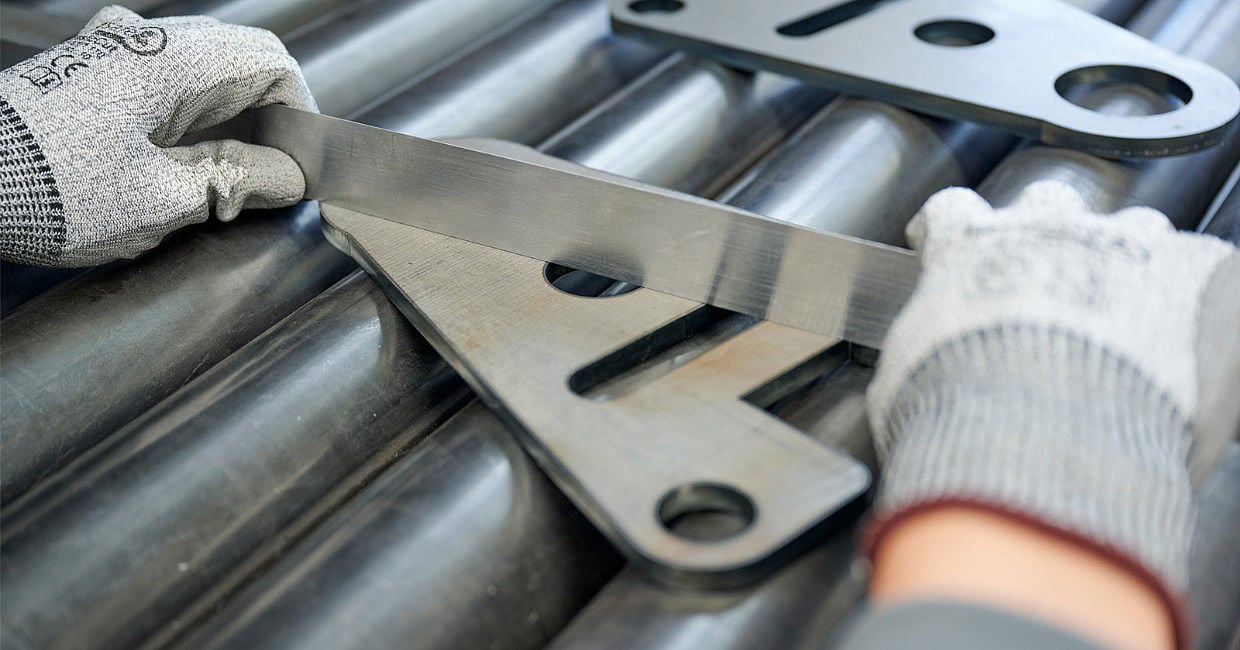Remember the residual stresses in the material
A factor for precision sheet metal processing that is too often forgotten, is the material itself. Because the sheet metal may have locked-in stresses, you won’t necessarily see them and they are hard to measure. Warped sheets or sheet metal parts could be an indication of internal stresses. However, that’s not enough to be certain.
During various machining processes, these residual stresses make their presence felt in an unpleasant way. For example, setting up the welding workstation takes longer, because the parts do not fit precisely. Additionally, more angularity errors occur during bending operations. Even worse, complete welding assemblies need to be reworked because the final tolerances are not met. Residual stresses can have a very bad impact when it comes to laser cutting: During cutting suddenly a part of the sheet may jump up and push against the laser head. Thus, resulting in a costly mistake which also leads to downtime.
Leveling removes residual stresses reliably
Although residual stresses are not necessarily measurable, you can relieve them. For sheet metal and sheet metal parts, this is best done via leveling machines. They should preferably have many rollers that bend the sheet alternately up and down while it passes through the machine. The bends become smaller and smaller towards the end of the process and a flat and stress-relieved sheet or sheet metal part comes out of the leveler. This process just takes a few seconds. It is thus more efficient than other leveling methods.
Ultimately, for many operators a precision leveler pays off. For example, Danne Holding managed to cut process costs by up to 40 percent. “We also process complex parts efficiently, with no additional rework involved. Downstream processes such as edge rounding and welding need very little adjustment or reworking,“ shares Josef Spieker, Technical Director. Likewise, at Sturm Blechverarbeitung, the welders welcomed the leveling machine. Before that, in order to fit the sheets into the clamping device before welding, they had to straighten bulbous and warped sheets with the flame. Thanks to a leveling machine, the throughput times in the welding shop shortened. Reworking is hardly needed, which saves a lot of time and also money.



